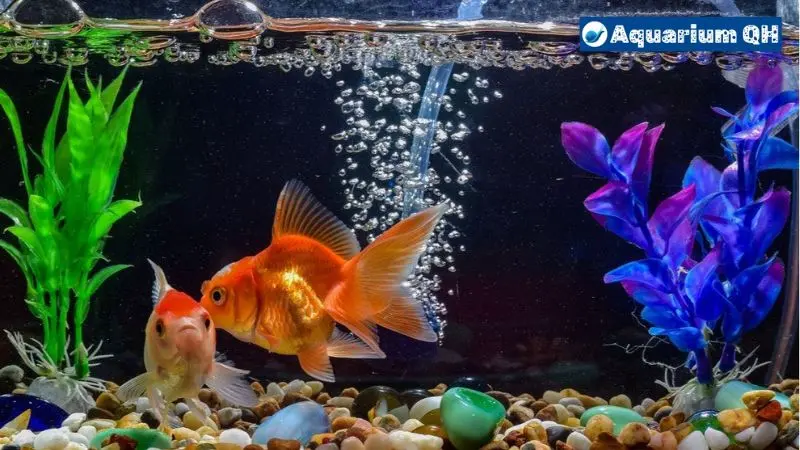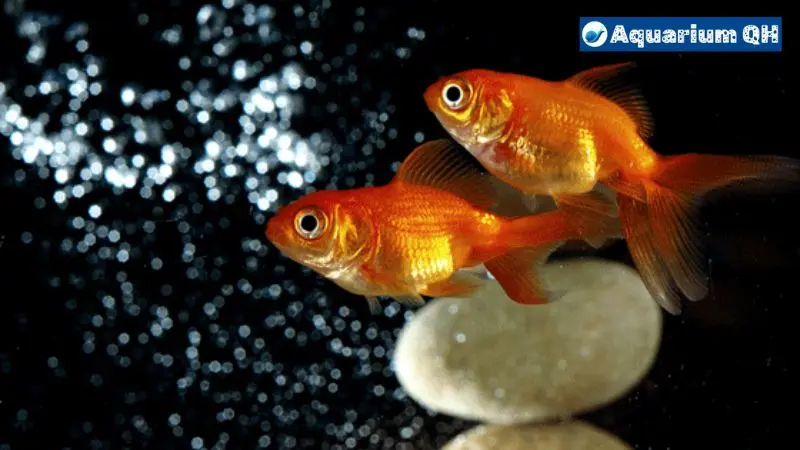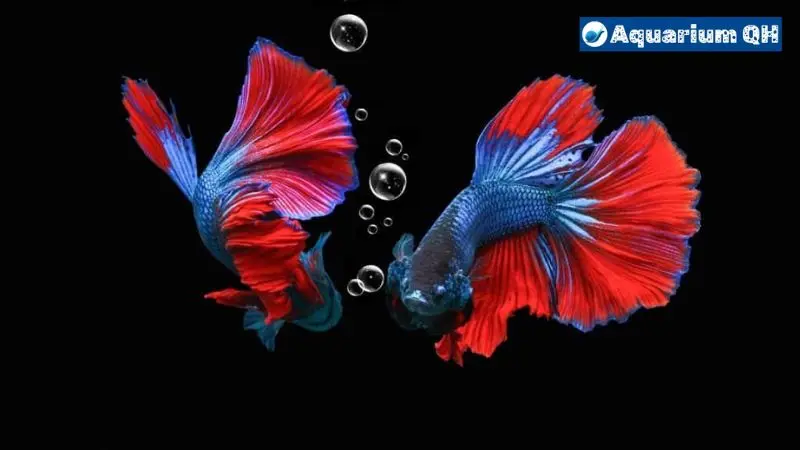Goldfish are one of the most popular freshwater aquarium fish, known for their bright orange color and flowing fins. You’ve likely seen them swimming around decorated fish tanks, blowing bubbles as they explore their underwater world. The bubble streams flowing up from aquarium decorations and airstones create a tranquil ambiance. But do goldfish need those bubbles?
The short answer is no. While aesthetically pleasing, bubbles are not required to keep goldfish alive and healthy with proper tank maintenance. Goldfish do require dissolved oxygen in the water like all fish. However, there are other effective ways to oxygenate the water for them. Bubbles may provide some benefits, but also have downsides to consider.
Let’s dive deeper into the details on bubbles and oxygenation for goldfish tanks. Discover when extra aeration is recommended, and how to optimize water quality without relying solely on bubbles.
Do Goldfish Need Oxygen From Bubbles?

Goldfish, like all fish, have gills that allow them to absorb oxygen directly from water. The bubbles we often see in fish tanks do not provide supplemental oxygen to goldfish. The movement and sound of the bubbles can be pleasing aesthetics for humans, but goldfish do not rely on that bubbled oxygen in any way. Their gills pull all the oxygen they need from the water surrounding them. As long as they have well-oxygenated water, goldfish can thrive without any bubbles or other forms of water agitation. The bubbles themselves are simply for decoration and do not impact a goldfish’s access to oxygen.
Why Do Fish Tanks Have Bubbles?

The main reason most fish tanks have bubblers is to aerate the water. Bubblers release bubbles into the water, which increases the oxygen levels. As fish breathe, they take oxygen from the water. Without proper aeration, the oxygen levels can drop too low. Bubbles help replenish oxygen to prevent this.
The bubbles also provide water circulation and surface agitation. This prevents the water from becoming stagnant and allows gases like oxygen, carbon dioxide, and nitrogen to exchange with the air. Overall, bubblers are an easy way to keep oxygen levels high for fish.
Do Bubbles Benefit Goldfish?
Bubbles can provide some benefits for goldfish tanks. The rising bubbles help stimulate fish by providing motion and activity in the tank. The bubbles also increase surface agitation, which helps increase oxygen exchange at the water’s surface. This is important since fish breathe oxygen dissolved in the water. The bubbles help maintain higher oxygen levels. Finally, bubbles simply look nice in a fish tank and add to the aquarium’s visual appeal. The steady stream of bubbles creates a pleasant ambiance. So while not strictly necessary, adding an air stone or bubble wand to create bubbles can be beneficial in a goldfish tank. The bubbles help liven up the environment.
Potential Downsides of Bubbles
While bubbles can provide supplemental oxygenation for goldfish tanks, they also come with some potential downsides that owners should be aware of.
Noise
The constant humming and splashing sound from bubble outputs and filters can be annoying to deal with. The equipment often vibrates and makes noise which can disrupt sleep or relaxation in rooms where aquariums are kept. Owners will need to find quieter equipment or place tanks far from high traffic areas to avoid noise pollution.
CO2 Buildup
Excessive bubbling over long periods gradually increases carbon dioxide levels in the water. This CO2 buildup causes pH levels to drop over time, creating an acidic environment that can harm goldfish health. Owners need to monitor pH and boost alkalinity to counteract this effect.
Salt Creep
The bubbles and splashing lead to faster evaporation, increasing salt concentration in marine aquariums. This “salt creep” stresses fish and requires more frequent water changes. The splashing also leaves salty residue on tank walls and décor. Salt creep is less of an issue for freshwater goldfish tanks.
Bubble Recommendations
When it comes to bubbles in a goldfish tank, the type, size, and placement can make a difference. Here are some recommendations:
Bubble Type
-
Air stones – These porous stones diffuse air into fine bubbles, creating lots of surface agitation. They provide excellent oxygenation.
-
Air wands – Flexible plastic wands with an air stone attached to the end. Allows directing a stream of small bubbles. Good for targeting areas.
-
Air curtains – Long tubes with slits or holes to release a wall of bubbles. Useful for oxygenating tanks with minimal equipment visible.
Bubble Size
Smaller bubbles are better as they provide more surface area and dissolve faster into the water.Aim for bubbles 1mm or less in size. Avoid large air pumps that produce fewer large bubbles.
Bubble Placement
-
Place bubble output near the water surface to maximize air diffusion.
-
Position air stones or wands horizontally just under the water line to create surface disturbance.
-
Direct bubbles toward filter intakes to improve circulation.
-
Angle air curtains to blow bubbles along the back or side walls.
Adjust flow rate to avoid excess splashing. Monitor fish for signs of stress from heavy water movement.
Other Oxygenation Options
Goldfish don’t actually need bubbles, but they do require oxygen. If you don’t want to use bubbles, there are a few other good options for oxygenating the water.
Plants
One of the best natural ways to increase oxygen levels is to add aquatic plants to the tank. During photosynthesis, plants absorb carbon dioxide and release oxygen into the water. Choose robust plant varieties like Anubias, Java Fern, and Amazon Sword that can thrive fully submerged. Make sure the plants are healthy and growing actively to produce the most oxygen.
Surface Agitation
You can also oxygenate by agitating the water surface. This brings oxygen-rich air into contact with the water. Position the filter outlet to create some surface rippling or disturbance. Air stones work by agitating the surface while also releasing air bubbles.
Air Pumps
Dedicated air pumps force air through an air stone or bubble wand to diffuse tiny bubbles into the tank. This directly aerates the water with atmospheric oxygen. Air pumps provide a controlled, consistent way to oxygenate the water. They’re useful as a backup during power outages when filters may stop working.
When are Bubbles Necessary?

Bubbles in a goldfish tank may become necessary if the tank is overcrowded or undersized. Goldfish are messy fish that produce a lot of waste. This waste breaks down into ammonia, which is highly toxic.
In an overcrowded or too small tank, ammonia can quickly build up to dangerous levels. The bacteria that converts ammonia into less toxic nitrate needs oxygen to thrive. Without enough oxygen, the bacteria cannot effectively do its job and process the ammonia.
Bubbles help oxygenate the water so the bacteria can convert the ammonia before it harms the fish. In a tank that is the proper size for the number and size of goldfish, there should be enough surface area for sufficient gas exchange. But in cramped conditions, bubbles become important to prevent ammonia spikes.
So bubbles are most critical in undersized tanks and when too many goldfish are crowded into a tank. Bubbles help compensate for insufficient surface area for gas exchange. If housing goldfish in less than ideal conditions, adding an air stone or bubble wand can provide the extra aeration needed.
Maintaining Good Water Quality
Goldfish do require clean, oxygenated water to thrive. While bubbles provide some aeration, the most important factors in maintaining water quality are:
Filtration
A strong filtration system is crucial for goldfish tanks. Filters remove waste and break down ammonia into less toxic compounds. Canister filters or hang-on-back power filters designed for larger aquariums work best for goldfish. Avoid underpowered “corner” style filters. The filter should turnover the total tank volume at least 4-5 times per hour.
Water Changes
Frequent partial water changes are a must. Goldfish are messy fish with high bio-loads. Change out 25-50% of the tank water weekly. Use a gravel vacuum to remove solid waste during water changes. Chlorine/chloramine removing products should be used when replacing tank water.
Testing
Test water parameters regularly to catch any rising ammonia, nitrites, nitrates. A liquid test kit is more accurate than test strips. Ideal levels are:
- Ammonia – 0 ppm
- Nitrite – 0 ppm
- Nitrate – Below 40 ppm
Proper filtration, frequent water changes, and testing are key to maintaining the clean, healthy water goldfish require to thrive long-term. While oxygenation from bubbles may provide some benefit, they are no substitute for the basics of filtration, water changes, and testing.
Conclusion
Goldfish do not inherently need bubbles or aeration in their tank to survive. While bubbles can provide supplemental oxygen, especially in overcrowded or underfiltered tanks, they are not a requirement for healthy goldfish. The key factors for goldfish health are maintaining high water quality through filtration, partial water changes, and limiting overcrowding. With good tank maintenance, goldfish can thrive without any bubblers or airstones installed.
The most important takeaway is that bubbles themselves do not provide any direct benefits to goldfish. Rather, they simply increase surface agitation and gas exchange at the water’s surface. This agitation can help increase oxygen levels, but is not essential in a well-maintained aquarium. Additionally, excessive bubbles and surface turbulence can actually stress out goldfish or displace oxygen.
In summary, bubbles are not mandatory for goldfish, and their necessity depends on tank size, stocking levels, and filtration capacity. With appropriate tank maintenance and water quality monitoring, goldfish can live long, healthy lives without any supplemental aeration from bubbles. The priority should be on the fundamentals of goldfish care. Please continue to follow Aquarium QH to find out interesting information.




